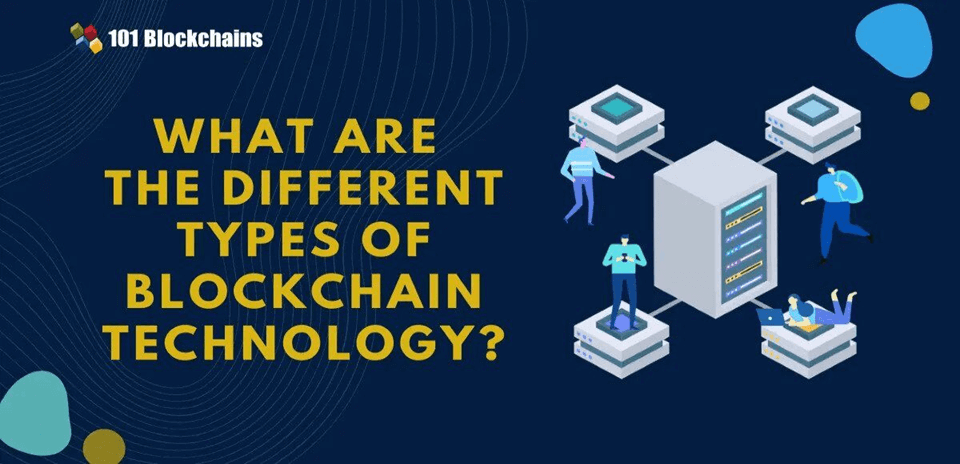Learn how blockchain truly works, master key definitions, and uncover what makes smart contracts so "smart." Dive into the fundamentals, gain valuable insights, and start your blockchain journey today!

- Reviews
Milly Perry
- on August 30, 2018
Blockchain Governance Principles “Who guards the guards?”
Blockchain Governance introduction
When the term blockchain comes up in a conversation, most people shut down and politely try to disguise their obvious boredom. That is, until they understand that blockchain technology could ensure that their coffee wasn’t an imitation, that their vegetables haven’t been sprayed with chemicals, that their drugs haven’t expired, that their refrigerators’ have ordered the products they needed, that their inheritances would be divided according to their grandfather’s’ wishes, and that sellers’ ownership of their new cars have been verified according to their digital identities. The blockchain represents the next generation of the internet.
In May, a research team from Oxford University’s Turing Institute submitted a report to the British Parliament, arguing that the power of the blockchain innovation derives more from its general perspective and its financial conceptions than from its technological implementation. This is because blockchain technology expresses a narrative which is important because of how it reexamines existing financial structures and how they work, rather than due to any contributions to implementing a specific technology, integrating a particular code or creating an application serving a defined industry. The Turing Institute report defined blockchain technology as a technology so nascent that it still does not rise to the level of a technology in its infancy. The report compares the blockchain’s current developmental stage to that of the internet in 1993, four years before Amazon became a publicly traded company, one decade before Facebook was established, and eight years before the bursting of the dot.com bubble.
Blockchain Governance status
Over the last few years, this nascent financial-technological concept of the blockchain has been offering the hope and possibility of bearing responsibility for mending the world, healing society of its illnesses, and working miracles in almost every aspect of our lives. Scholarly accounts claim that the blockchain could solve the problem of refugees in Europe, eliminate the scourge of food and water famine in Africa, expand democracy worldwide, topple totalitarian governments and ease global warming. In reality, like the well-known Silicon Valley joke that, “We wanted flying cars; instead we got 140 characters,” referring to Twitter, the gap between this promise of technological salvation and its implementation is both broad and profound.
Neither the innovation that the blockchain technology brings to the realm of finance and business nor its conceptual breakthroughs, that could lead to the implementation of significant paradigm changes in numerous fields, should be underestimated, The blockchain’s principles are based on decentralized database management rather than being run by a central entity. The verification of actions in blockchain technology is carried out through data encryption, with data signed and secured so that it can’t be altered or harmed, all the while using a democratic consensus, whereby at least 51% of the nodes verify and approve the transactions’ performance. This consensus eliminates any possible abuse of power or the imposition of a personal agenda, and actually results in a technology whose basic principle not only creates and promotes trust among colleagues but also strengthens the values of democracy and decentralization.
Blockchain Governance Principles
The principles embodied by blockchain technology serve as an innovative additional value and as a conceptual and realistic alternative to the centralized manner in which our lives are currently run. Much of what we now experience is determined through top-down decisions, whether by the management of international mega-corporations, or by centralized conglomerates controlling most areas of our lives. One of the questions only rarely explored in the last few years is on what rules is blockchain technology based. This involves asking who determines the blockchain’s DNA, who has the right to make decisions, and how is this right implemented in reality. More specifically, what is the blockchain’s system of governance, or “who guards the guards?”
In general, governance refers to the institutional system facilitating shared decision making and guaranteeing the implementation of decisions. Governing bodies, whether of nations or of blockchain miners, consist of legislative, executive, and judiciary branches and are characterized by their ability to make and execute decisions and to obtain optimal results. The Harvard Law School Forum on Corporate Governance and Financial Regulation suggests a variety of ways in which blockchain technology could be used to incorporate principles of corporate governance into currently operating corporations, and views this technology as a significant innovation holding great promise for the future. However, the Forum does not offer suggestions on how to integrate principles of corporate governance into the technological systems on which the blockchain is based. Is this potential cross-use of blockchain technology in corporate governance and corporate governance in blockchain technology simply a tautology representing different ways of stating the same goal, or an unrealistic recursion or repetition?
Blockchain Governance development
The blockchain is a FinTech innovation affecting the economic, business and financial sectors. Researchers from the European Corporate Governance Institute (ECGI) have noted the need to integrate principles of corporate governance into regulatory institutions in financial markets and have encouraged the use of corporate governance best practices. These include a collection of principles, mechanisms and rules defining how companies should conduct their control and oversight responsibilities, as well as management principles based on transparency, unity and accountability. The recommendations of the ECGI include: separating regulatory institutions from dependency on geographical or national jurisdictions, thus minimizing political interference; separating the budgets of regulatory entities’ budgets from state budgets in order to increase the independence or regulatory bodies; increasing diversity among directors serving in regulatory entities by allowing more representatives from the public and among experts; ensuring that directors meet legal standards of care and fiduciary duties; and making use of international peer review in order to enhance the independence of regulatory bodies. It would be worthwhile to examine whether these recommendations could be useful in developing governing principles for blockchain systems.
Researchers from the French National Center for Scientific Research (CNRS ), who examined the possibility of integrating law into computer coding, have stated that such integration has become very popular in the last decade for the purpose of regulating the behavior of consumers, or code users, in the context of both online and real-life activities. In fact, behavioral regulation which has been integrated into codes actualizes values which deeply affect our behavior. Examples include: cooperation while working on shared files, as with Google Docs; the sharing of information and knowledge on social networks; the promotion of narcissistic individualism, as with Facebook; and the acceptance of or obedience to the culture of control and tracking with maps and navigation applications. All of these affect users in ways in which they are not even aware. According to CNRS researchers, blockchain regulation would soon become the reality of the “internet of things,” enabling interaction between users’ devices, without users’ express permission and “for their own good.” Blockchain-inspired devices would operate autonomously according to technical rules and controlled by smart contracts, opening and locking our doors, directing us in smart cars and infinitely more activities, at whatever speed and in whatever manner they determined.
Law in modern societies is often deliberately vague in order to allow flexibility in exceptional cases. In contrast, the laws of technology are fundamentally immutable. As a result, the efficiency attained by the blockchain systems could ultimately prove detrimental to its users. However, the CNRS researchers view the ability to implement techno-legal systems as a democratic value of significant importance, and conclude that this utopian network of governance potentially offered by blockchain technology could help realize libertarian aspirations, so long as it wouldn’t result instead in a social dystopia.
Blockchain Governance Principle – The DAO test case
One example of an innovative organizational and business structure utilizing principles of corporate governance in the blockchain’s ecosystem is Decentralized Autonomous Organization, or DAO. This autonomous business model, which today seems like science fiction, but could prove mundane in the future, was first implemented in 2016 with the purpose of serving as a project financing fund. DAO operates on the Ethereum network and is based on crowd funding, having raised $150 million from 11,000 investors. The one hundred largest investors hold 46 percent of the company’s shares, and the largest investor holds less than four percent of the shares. As a result, the controlling shareholders’ shares do exist, but they wield less power than they would in the conventional business market. DAO operates on a system of smart contracts among its shareholders and has no physical address or any people holding any management positions. According to the theory guiding this organization’s governance, preventing the concentration of power in the hands of representatives, a condition known as the representative’s dilemma in corporate governance, and dividing the power of decision making among all the shareholders guarantee better safeguards on the shareholders’ interests and prevent the misuse of information and budget resources by managers whose interests can differ from those of the company’s shareholders.
As a blockchain-based organization, DAO is completely transparent to all its shareholders. Actions taken by it are carried out according to a code which any shareholder can review and audit. The investors hold voting rights through digital tokens, and decisions are made by voting on proposals included on the agenda by a “contractor.” Prior to the vote, a group of volunteers called “treasurers” examines the identity of those proposing any action and ensure that all proposed projects are in accordance with the law. All profits from investments in projects are transferred to the shareholders, without any deductions for wage expenses, of course. One of DAO’s original purposes was to be an exterritorial organization without any national jurisdiction, in order to guarantee its independence and to ensure that it would not violate the laws of any country. However, it did eventually register as a company in Switzerland. DAO was recognized as a groundbreaking example which, by implementing pure corporate governance principles with maximum transparency and full control by all shareholders, seriously challenged the management paradigms of financial and business organizations. It thus served as a precedent for governance in an autonomous organization.
Returning to the blockchain policy report recently submitted to the British Parliament, this report includes the definition of the standards of Environmental, Social and Governance (ECG), which is the broader equivalent of Corporate Social Responsibility (CSR). The report states that, already today, these standards have been adopted by businesses valued at $8.2 trillion in the United States alone, while worldwide, the scope of businesses using these standards is estimated at $22 trillion. The researchers recommend defining the ECG as an international set of standards to be used as the basis for the creation of the principles of governance for blockchain technology, in order to ensure the creation of a moral and accountable basis for the structures, mechanisms, finances and societies of the future. Implementing this recommendation may guarantee preservation of the principles of both corporate governance and of social responsibility.




